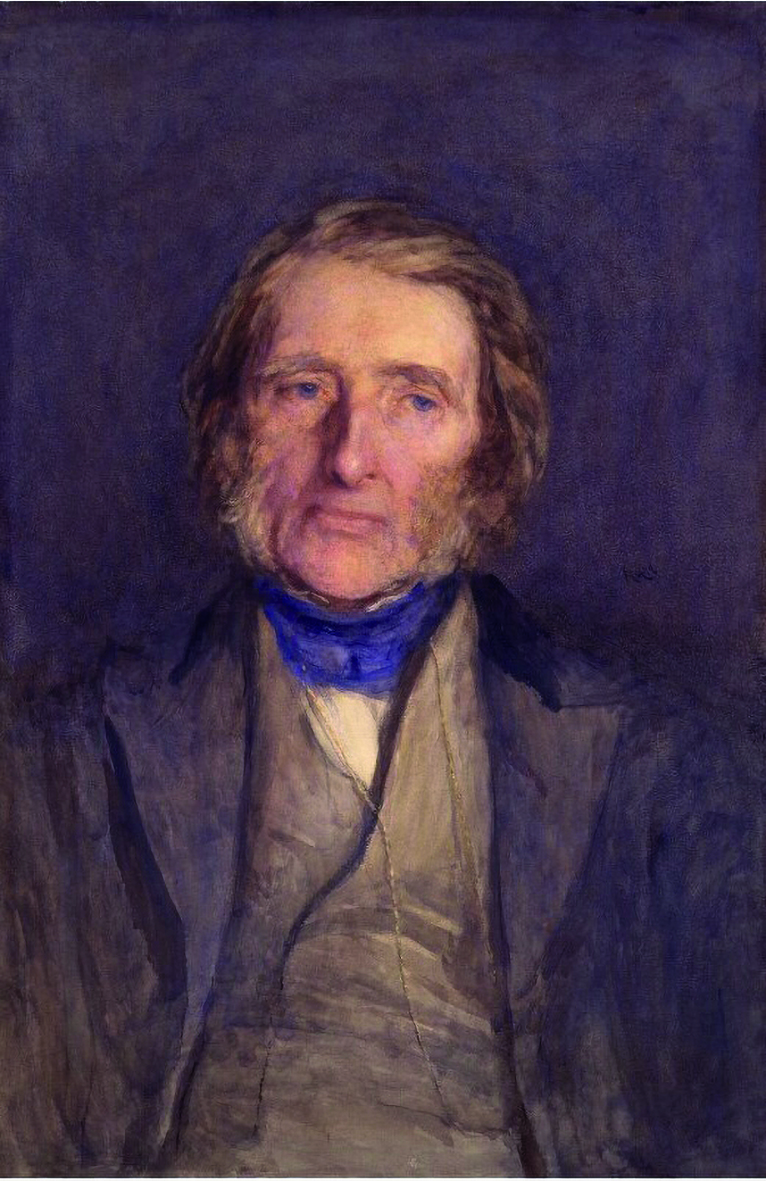This wonderful Cornish workshop and museum is dedicated to the legacy of studio pottery trailblazer Bernard Leach
IS RUSKIN STILL RELEVANT?
IS RUSKIN STILL RELEVANT?
20 Mar 2019
Artist. Ethical provocateur. Environmental champion. Influential art critic. John Ruskin was all of these – but is his work still pertinent today? Arts Society Lecturer Dr Suzanne Fagence Cooper states her case.
 © National Portrait Gallery, London
© National Portrait Gallery, London
An 1879 portrait of John Ruskin by Hubert Herkomer
There is a corner of the Wyre Forest in Worcestershire, with its oak trees and orchards, called Ruskin Land. It was given in the 1870s to John Ruskin (1819–1900) and friends as a retreat from the industrial Black Country. It is still somewhere to get ‘back to the land’. This place is just a small part of the living legacy of John Ruskin. He hoped it would be ‘beautiful, peaceful and fruitful’. Now, 200 years after his birth, York Art Gallery is joining museums across the UK in celebrating his life and work. The exhibition I am curating, Ruskin, Turner & the Storm Cloud, looks at Ruskin’s fascination with landscapes and skies. It reveals his concerns about ‘The Storm Cloud’ of industrial pollution. He watched in despair as darkening skies spread across London and the Lake District. In his study of Turner’s cloudscapes and mountain scenes, Ruskin began to reimagine the relationship between artists and the natural world.
Ruskin’s own travels in Turner’s footsteps, to the uplands of Britain and to the Alps, are beautifully recorded in watercolours and drawings by both artists (displayed in the exhibition). Ruskin’s love of looking – what he called the ‘sensual faculty of pleasure in sight’ – underpinned all his arguments. In his lectures, he raised awareness of climate change and environmental degradation, because he had seen it with his own eyes. He mourned the clear skies of his childhood, and ‘the ruin of the things we loved. Our Geneva – our Como – our Verona – twice dead – and plucked up by the roots’.
Ruskin, Turner & the Storm Cloud reconnects Ruskin with our present anxieties and needs, as we display new commissions by Emma Stibbon RA. Last summer she retraced Ruskin’s journeys through the foothills of Mont Blanc. Ruskin often visited Chamonix and the Mer de Glace in the 1840s and 1850s, and he made some of the earliest daguerreotypes of the glacier, revealing its surface complexities. Stibbon has recorded her own view of Mer de Glace in large-scale drawings and cyanotypes. Through her images we can see how far the ice has retreated. An empty valley now lies where Ruskin’s glacier had been. He tried to warn us. But more than that, he tried to show us a different way to live and work.
‘ruskin tried to show us a different way to live and work’
Ruskin believed in taking responsibility for our actions, and keeping an open mind. He gave away his collection of Turner’s watercolours so that they could be seen by art students; he made copies of Italian frescoes and French Gothic carvings for working people in Sheffield to enjoy; he lectured in Manchester, Bradford and Woolwich. He had his flaws, of course, carrying with him many of the prejudices of his generation. He acknowledged the limitations of his upbringing in his autobiography. But he tried to transcend the evangelical teachings of his mother and the social insecurities of his father. He spoke up for the old and fragile, and for people, buildings and places that couldn’t defend themselves. He and his friends stopped the destructive restoration of St Mark’s Basilica in Venice. Together they founded the Society for the Protection of Ancient Buildings. Ruskin inspired the early Labour movement, campaigned for girls’ education and opposed animal testing in the Oxford University science labs.
His ‘magnificent enthusiasm,…a profound sympathy with the fullness and wealth of the material universe’, inspired people, from William Morris to Gandhi,
to change their lives. For over 100 years, families have left their cities to settle on the farms in Ruskin Land. So, overlaying our rich display of paintings in the exhibition, we will have sounds of the Wyre Forest. They remind us that art, handcraft and environmental stewardship can still thrive, and that Ruskin’s work is not yet done.
See
Ruskin, Turner & the Storm Cloud: Watercolours and Drawings, York Art Gallery, 29 March–23 June, yorkartgallery.org.uk; Abbot Hall Art Gallery, Kendal, 12 July–5 October, abbothall.org.uk
John Ruskin: The Power of Seeing, Two Temple Place, London, until 22 April, twotempleplace.org
This will be complemented by a further show at the Millennium Gallery, Sheffield, 29 May–15 September, museums-sheffield.org.uk
For more on Ruskin’s bicentenary, see ruskin200.com; for Ruskin Land, see ruskinland.org.uk
About the Author
The Arts Society
JOIN OUR MAILING LIST
Become an instant expert!
Find out more about the arts by becoming a Supporter of The Arts Society.
For just £20 a year you will receive invitations to exclusive member events and courses, special offers and concessions, our regular newsletter and our beautiful arts magazine, full of news, views, events and artist profiles.
FIND YOUR NEAREST SOCIETY
MORE FEATURES
Ever wanted to write a crime novel? As Britain’s annual crime writing festival opens, we uncover some top leads
It’s just 10 days until the Summer Olympic Games open in Paris. To mark the moment, Simon Inglis reveals how art and design play a key part in this, the world’s most spectacular multi-sport competition



